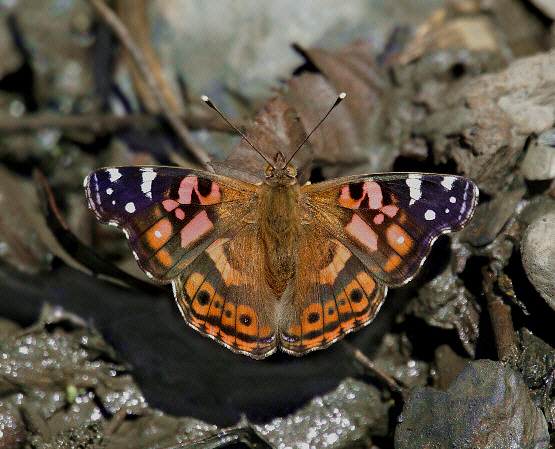
Introduction
The genus Vanessa comprises of about 20 species and includes the most widespread butterfly in the world – the Painted Lady Vanessa cardui which occurs in Europe, Asia, Africa, Australia and across North America. There are 9 other species found in the Americas: myrinna from Brazil, braziliensis from Brazil and Peru, carye from Argentina, terpsichore from Chile, altissima from Peru and Bolivia, tameamea from Hawaii, annabella from the western USA, virginiensis which is distributed from the USA to Colombia, and the Red Admiral atalanta which occurs across Europe, Asia, north Africa, and throughout North America.
All Painted Lady species have a similar pattern of pinkish-orange, black and white on the upperside, and have cryptic undersides marbled in olive and grey, with a row of post-median ocelli of varying sizes on the hindwings.
Vanessa altissima is one of the smallest species with a wingspan of about 50mm. It is a high altitude species, found only in the high Andes of Ecuador, Peru and Bolivia.
Habitats
This species occurs in disturbed cloudforest habitats, frequenting areas of scree caused by rock falls beside mountain streams. It is normally found at altitudes between about 2000-3300m.
Lifecycle
I do not have any information regarding the lifecycle of altissima. The eggs of the closely related virginiensis are whitish. They are laid singly on a wide range of plants including Antennaria, Senecio and Artemesia ( Asteraceae ), Antirrhinum ( Scrophulariacae ) and Malva ( Malvaceae ). The larvae are dark, usually mottled with blackish and bear short whorled spikes on the back and sides. They live solitarily within a silken web spun around the upper leaves and stem of the foodplant, leaving a mass of frass adhering to the silk. The pupae of Vanessa species are greyish, and slightly lustrous. They are suspended by the cremaster within the silk nests spun by the larvae.
Adult behaviour
Males tend to be seen in two’s and three’s, basking on boulders at the sides of unsurfaced mountain roads, usually in the vicinity of streams or ditches. They usually settle with wings outspread, while imbibing moisture from the surface of rocks. I have also seen them sitting with wings closed, while imbibing moisture in crannies amongst rocks.
